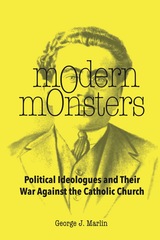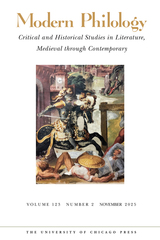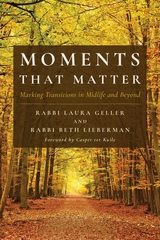3 books about Photography, Erotic
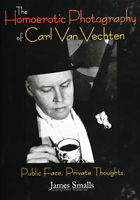
The Homoerotic Photography of Carl Van Vechten
Public Face, Private Thoughts
James Smalls
Temple University Press, 2006
Carl Van Vechten (1880-1964) was perhaps the most notorious white patron of the arts of black America, particularly during the Harlem Renaissance. In 1932, he gave up a career as a theater critic and a novelist of light fiction to become a full-time amateur photographer. His photographs of the era's celebrated African American cultural figures are well-known, but until recently his private, homoerotic interracial photographs were sealed in an archive. Author James Smalls considers how these images relate to Van Vechten's public persona and private desires. He discusses the interracial photographs in the context of white privilege and exotic tourism, primitivism's relation to modernism, camp sensibility and theatricality, and the vibrancy of underground gay visual culture during periods of political oppression. He also considers contemporary viewers' conflicting responses to the eroticized black male body in Van Vechten's and later twentieth-century photography. This original and provocative book embraces transracial voyeuristic pleasure while acknowledging the negative political implications of that pleasure. Amply illustrated with 60 pioneering duotones, The Homoerotic Photography of Carl Van Vechten celebrates the sensual nude male form with both candor and reverence, offering a rare glimpse into the private domain of the master photographer and his handsome subjects.
[more]
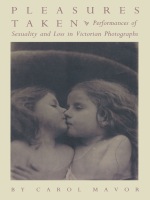
Pleasures Taken
Performances of Sexuality and Loss in Victorian Photographs
Carol Mavor
Duke University Press, 1995
An intimate look into three Victorian photo-settings, Pleasures Taken considers questions of loss and sexuality as they are raised by some of the most compelling and often misrepresented photographs of the era: Lewis Carroll’s photographs of young girls; Julia Margaret Cameron’s photographs of Madonnas; and the photographs of Hannah Cullwick, a "maid of all work," who had herself pictured in a range of masquerades, from a blackened chimney sweep to a bare-chested Magdalene. Reading these settings performatively, Carol Mavor shifts the focus toward the subjectivity of these girls and women, and toward herself as a writer.
Mavor’s original approach to these photographs emphatically sees sexuality where it has been previously rendered invisible. She insists that the sexuality of the girls in Carroll’s pictures is not only present, but deserves recognition, respect, and scrutiny. Similarly, she sees in Cameron’s photographs of sensual Madonnas surprising visions of motherhood that outstrip both Victorian and contemporary understandings of the maternal as untouchable and inviolate, without sexuality. Finally she shows how Hannah Cullwick, posing in various masquerades for her secret paramour, emerges as a subject with desires rather than simply a victim of her upper-class partner. Even when confronting the darker areas of these photographs, Mavor perseveres in her insistence on the pleasures taken—by the viewer, the photographer, and often by the model herself—in the act of imagining these sexualities. Inspired by Roland Barthes, and drawing on other theorists such as Julia Kristeva and Luce Irigaray, Mavor creates a text that is at once interdisciplinary, personal, and profoundly pleasurable.
Mavor’s original approach to these photographs emphatically sees sexuality where it has been previously rendered invisible. She insists that the sexuality of the girls in Carroll’s pictures is not only present, but deserves recognition, respect, and scrutiny. Similarly, she sees in Cameron’s photographs of sensual Madonnas surprising visions of motherhood that outstrip both Victorian and contemporary understandings of the maternal as untouchable and inviolate, without sexuality. Finally she shows how Hannah Cullwick, posing in various masquerades for her secret paramour, emerges as a subject with desires rather than simply a victim of her upper-class partner. Even when confronting the darker areas of these photographs, Mavor perseveres in her insistence on the pleasures taken—by the viewer, the photographer, and often by the model herself—in the act of imagining these sexualities. Inspired by Roland Barthes, and drawing on other theorists such as Julia Kristeva and Luce Irigaray, Mavor creates a text that is at once interdisciplinary, personal, and profoundly pleasurable.
[more]

Venus Inferred
Laura Letinsky
University of Chicago Press, 2000
We are all, it is said, looking for love. But what does love look like? Does it look the way it feels? The visual vocabulary of romance-its attendant comforts and vulnerabilities, ambivalences and unclarities-is the subject of Venus Inferred. This collection of 46 richly reproduced color photographs is Laura Letinsky's study of contemporary lovers as they are seen, as they show, and as they see themselves making love and inhabiting domestic space. Entering what might be called the intimate sphere, Letinsky's camera explores a space too personal to be termed public and yet whose cultural and emotional shape is uncannily recognizable. Over a seven-year period, Letinsky visited lovers in their homes, hotel rooms, bedrooms, bathrooms, and kitchens and recorded in detail the promises, disharmonies, and disappointments that inhere in modern coupling.
Accompanying the photographs is an essay by critic Lauren Berlant, which presents an aesthetic and cultural analysis of the contemporary images of romance and intimacy. Berlant contemplates the burden of clarity that sexuality bears, implicit both in conventional romantic ideals and in the "counterpolitics of the flesh" that desires to escape them. Thus arises the sublime ordinariness of Letinsky's couples, Berlant argues: "As 'normal' pleasures themselves become deemed modes of domination, the already destabilizing aspects of sexuality can feel even more unsettling." An interview between Letinsky and Berlant unfolds the artist's intellectual formation while exploring the unsettling and pleasurable power of her images as they circulate through the domains of romance, sexuality, and contemporary culture.
Accompanying the photographs is an essay by critic Lauren Berlant, which presents an aesthetic and cultural analysis of the contemporary images of romance and intimacy. Berlant contemplates the burden of clarity that sexuality bears, implicit both in conventional romantic ideals and in the "counterpolitics of the flesh" that desires to escape them. Thus arises the sublime ordinariness of Letinsky's couples, Berlant argues: "As 'normal' pleasures themselves become deemed modes of domination, the already destabilizing aspects of sexuality can feel even more unsettling." An interview between Letinsky and Berlant unfolds the artist's intellectual formation while exploring the unsettling and pleasurable power of her images as they circulate through the domains of romance, sexuality, and contemporary culture.
[more]
READERS
Browse our collection.
PUBLISHERS
See BiblioVault's publisher services.
STUDENT SERVICES
Files for college accessibility offices.
UChicago Accessibility Resources
home | accessibility | search | about | contact us
BiblioVault ® 2001 - 2025
The University of Chicago Press


